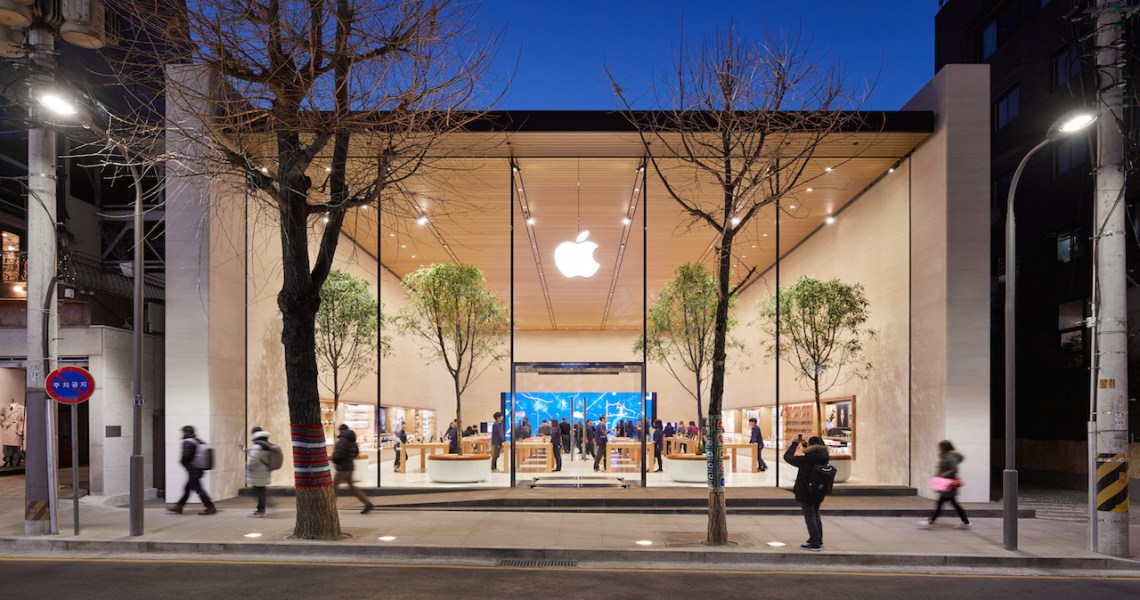In the latter half of 2021, the narrative around physical retail was that things were looking up. Foot traffic was returning and brands were planning ambitious new store openings across the country.
Then the Omicron variant hit, and many best-laid plans had to be thrown out. At the end of 2021, the U.S. surpassed 2 million new cases in one week for the first time, and cases continue to spread across North America. Some stores have temporarily closed, while others have limited their hours or instituted capacity restrictions to help stop the spread. Meanwhile, others that have remained open and hopeful that the Omicron variant spike will pass are facing sparse foot traffic.
Apple, for one example, temporarily closed all of its stores in New York City, as well as a few in other areas including Washington State, starting on December 27. Some were closed out of caution, while other closures were due to too many employees testing positive for Covid-19 to sufficiently staff the stores, according to Apple.
The SJP Collection, a shoe boutique in Manhattan owned by Sarah Jessica Parker, also temporarily closed its doors on Dec. 28. The SJP Collection did not respond to request for comment.
“It is our top priority to keep both our customers and staff safe and healthy,” a statement from the brand’s Instagram account read. “We are so sorry for any inconvenience and we hope to see you soon.”
The brand announced on Monday that the store would reopen on Tuesday, but with limited hours and capacity. Instead of being open from 10:30 a.m. to 6 p.m., it is now open from 11 a.m. to 5 p.m. Monday through Saturday, and 12 p.m. to 5 p.m. on Sunday.
The stores that have stayed open are seeing a drop in foot traffic recovery, according to some reports. A Saks Fifth Avenue employee told the New York Post that the weekend before Christmas saw much fewer customers coming into the store than usual. According to Springboard, a company that tracks retail foot traffic, store visits were up in December, compared to November, but were still 30% below 2019 levels. And retail’s sales growth is slower than it would have been without Omicron, according to the company.
“The Omicron variant is undoubtedly dampening the progress that physical retail has made, which is illustrated by [our] data showing that retail job ads fell 26% in one week [in mid-December], during a time where retail job demand usually skyrockets,” said Andrew Hunter, co-founder of job search platform Adzuna. “With Omicron spreading rapidly, we’re seeing a significant impact on industries like airlines and travel, in particular, which will also move into retail, reversing progress there.” More than 4,000 flights have been canceled due to Omicron, and other industries like hotels and restaurants have taken significant hits.
Public Rec, an athletic wear company, has kept its two stores in New York and Chicago open throughout the Omicron surge. However, founder and CEO Zach Goldstein said the impact of the variant is making him rethink plans to open future retail stores.
“Omicron has definitely had an impact on how we are thinking about stores,” Goldstein said. “For our stores currently open, we’ve seen less of an impact in Chicago and more of one in New York City. However, as we assess new locations for 2022, we’ve started to think more seriously about selecting retail locations that may be less affected by what feels like the never-ending ebb and flow of COVID-19. Namely, [that includes] locations that have had foot traffic during last six months as case counts have fluctuated [like Chicago].”
But Omicron’s retail impact could prove short-lived. In South Africa, where the Omicron wave started several weeks before the U.S., the number of new Omicron cases faded by Monday, which could mean the U.S. will see a similar drop-off in a few weeks’ time.




